Buddha Jayanti and His Teachings
Buddhism, from when and where did it begin .
Buddhism began in a region of southeast Nepal in Asia during the mid-sixth century in Kapilvastu, a city under the kingdom of Lumbini of that time. The Lumbini and its surrounding area were ruled by a clan called Shakya, a leading faction of that time. Shakyas were traditionally believed to belong to a Kshatriya (warrior clan).
It is generally a belief that the vast majority of the population in Northern India (closely connected with Nepal) used to practice forms of Vedic Hindu traditions under the leadership of strong Bramhin (Bramhan) priesthood with rituals and beliefs centered strongly and largely on this-worldly concerns, like managing or even trying to control the weather for a good harvest, curing illness and so on, which actually was already being questioned of its efficacy by some of the population.
Individuals and small groups of religious seekers were already questioning issues like possible life after death, the notion of rebirth into other modes of existence i.e. lower or higher realms, etc. These questions were what gave birth to scriptures like Upanishads with their deep reflection on the nature of self and of greater spiritual realities. In those days if a person would deny the fundamental Vedic Hindu belief, that person would be immediately dubbed as a Nastika (those who deny).

Who was Buddha?
Siddhartha Gautam was born around 563 BCE (Siddhartha meaning “he who has achieved his goal”) later known as Buddha. He was born to a ruling elite of that time and his father Shuddodan and his mother were wealthy elite. On his birth, Suddhodan consulted religious specialists so as to know what portent the boy’s body might communicate. And he was told, The child is destined to become either a world renouncer or a “wheel-turning monarch” (Sanskrit: chakravartin) While in Suddhodan’s palace, Gautam lived a life of ease and pleasure as his father resolved that his son would take the path of power and influence.
The father surrounded him with wealth and beauty and arranged to marry him at 16 so that Siddhartha would not renounce worldly life. He eventually had a son named Rahula.
Four Sights!
Why Siddhartha left the luxury is due to him perceiving “Four Sights”: a dead body, old age, sickness, and an ascetic. On several of the occasions, he had to leave the palace despite his father’s instruction to the servants to clear off the road of any unsightly reminders of human frailty. But, Siddhartha encounters the existential situation of human beings and perceives those four realities of life.
Once Gautama saw an old person, bent and struggling to walk. He was explained by his charioteer that it is because of old age that people face hardship. He too has to eventually face it in his life. One day his another tour came across a leper lying by the way in great pain. Again he was explained: it is an illness, which can happen to many people. Yet in another of his tours, he saw a funeral; after his query, he got the answer that “it is death, and no one can escape from it. It is inevitable. Then one day he saw a strange thing: Gautama saw a young man by the side of the road, without any possession, yet seemed content. All these sightings generally known as “Four sights” laid the foundations of Siddhartha’s renouncement of the palace, and a journey towards the illumination called “Buddhahood”
The Great Renunciation !
Siddhartha Gautama, Buddha or light of Asia as we know him today, as per the traditional belief left his palace, renouncing comfort, all its pleasures, and securities. He crossed the palace walls in pursuit of a realistic understanding of the world and the human condition.
His Journey and Initial Teachings!
His father’s desire was not to allow Siddharta Gautama to perceive the harsher realities of life, which could cause him to renounce the world. However, Siddhartha perceived those four sights, and eventually, at 29 years of age, he left the palace, his own wife (Yasodhara), and a child (Rahul) to seek his own path. In Gautama’s life story Rahul his son reappears as one of the early monks and his second wife Yasodhara as one of his first Bhikhunni (nun).
Siddhartha after leaving the palace in his initial learning stage went to learn from two Jain teachers, Udraka Ramaputra and Arada Kalama. Siddhartha attained the highest samadhis under their guidance but was unsatisfied with their method. He thought he had not overcome suffering, which was the main reason why he renounced his palace and its comfort.
Later he joined a group of ascetics in Banaras/Varanasi subjecting himself to several years of austerity. He subjected himself to the greatest of penance, by taking only one grain of rice per day. He almost died during these ascetic practices. He eventually realized that such harsh methods of penance and asceticism would not yield enlightenment. He renounces them, determined to follow his own understanding of the path that he had learned from several Buddhas in his past lives.
His illumination, the “Buddhahood”!
Thinking it is better to follow the path that he had learned from previous Buddhas, he moved on and decided to meditate, that too alone, under a Pipal tree in Bodhgaya until he would achieve enlightenment. In the night of Enlightenment, he discovers the ancient path of the Buddhas; he dwells into forward and reverse the twelve links of dependent origination.
He eventually attains three knowledge: he remembers all his previous lives; he attains the divine eye to see the arising and passing of sentient beings and succeeds in completely eradicating all his afflictions, Finally he succeeded in achieving his goal to find the most basic truths of human life, which he encapsulates within “Four Noble’s Truth”. From that moment onward, he is known as the Buddha, the awakened one, who has realized the ultimate truth of our existence.
The Buddhist traditions do suggest that he experienced terrible interference or struggle before and after his enlightenment. These four interferences are called maras and are numbered as four: his own afflictions, the death, the aggregates, and a god called Devaputra-mara. It was the latter, the Devaputra-Mara, who summoned up all his mighty power to prevent Buddha’s enlightenment; Even after his enlightenment, the same Devaputra-Mara tried to prevent the Buddha from spreading his knowledge among people in general.
His First Discourse at Banaras!
The awakened one, the Buddha, initially thinks of not teaching the newly discovered truth to the world, as it would be difficult for people to grasp it. However, upon the request of Samhapati Brahma, he decides to teach the Dharma (Dhamma) for the good of many so that they could overcome suffering or dukkha. The Buddha discovered that it is “The Attachment”, which is the main cause of all human suffering. The cause of this attachment is due to perceiving the five aggregates as “self”. Once he returned back to Vanaras, he again met the five ascetics with whom he had parted company earlier due to his dissatisfaction with their harsh ascetic practices. And, he preached the first teaching known as “turning the wheel of law” to these five persons. Now, Siddhartha Gautam indeed was a “wheel turner” as told at his birth but not as the type his father had wanted or envisioned him to be. He died in Kushinagar at the age of 80 around 463 BCE. For almost forty-five years he turned the greatest of all the wheels of the Dharma.
The Four Noble Truths!
Buddha’s Teachings. Enlightenment can also be meant as grasping the fundamental realities/ truth which can be summed up as Four Noble Truths.
- There is a truth of suffering.
- There is a cause of suffering.
- Anything that has cause has cessation once the cause is removed.
- There is a path that can remove the cause of suffering.
Eightfold Noble’s Path!
The eight elements in the classical Buddhist formulation for a modest style of living a human life is the Eightfold Noble’s Path. These eight elements for such a life (modest life are divided into three larger categories: i) ethics ii) concentration and, iii) wisdom. This Eight-Fold Path can be further elaborated as follows: The wisdom has two parts, the right view, and right intent. The concentration has three parts: right effort, right mindfulness, and right concentration. Ethics too has three parts: right speech, right action, and right livelihood. Buddha Jayanti and His Teachings
The most important of all is the wisdom part. It is mentioned in several Buddhist scriptures that all the other limbs are directed by wisdom, as it is likened to an eye. The right view offers a direction to the whole system. It is mainly having the right type of knowledge of reality, without any error. In brief, seeing the dharma-s or all phenomena as impermanent, suffering, no-self, and empty of self-nature is the essence of the right view. Right Intent has again three parts: the intent to renounce the world; the intent to not cause suffering and the intent to not harm. The last two are also defined as loving-kindness and compassion. Buddha’s Teachings
One more intention is added in Mahayana, i.e., the aspiration of Bodhicitta, the intention to achieve the Buddhahood to help all the sentient beings.
As for the ethics, it is mainly related with/to how we behave and conduct with other sentient beings. Hence, we are required to have the right type of speech. That is to say, we are not supposed to lie, say divisive words, not use harsh words, and not engage in useless small talk. Right effort is related with those activities and action we do that is beneficial to both ourselves and others. The right livelihood is about avoiding wrong types of livelihood that harm sentient beings such as not selling poison, weapons, not trading sentient beings, intoxicants, and meat. Buddha’s Teachings
Right Concentration, the third category is also further divided into three parts, as mentioned earlier. First comes the right vyaayaama means putting the right type of exercise to deal with the thoughts. It is mainly increasing the wholesome thoughts and removing unwholesome thoughts from the mind. Buddha’s Teachings
The right mindfulness is to practice the four stations of mindfulness, that is to say, the mindfulness of body, sensation, the mind, and the phenomena. It is well defined in the suttas such as the Sattipatthaana Sutta. The right samadhi or absorption is about practicing Samatha meditation. It is about entering into four main samadhis, which are also called ‘dhyaanas” or “Samaapatti-s”. Buddha’s Teachings
From the above explanation of the eightfold path, we can surely say with confidence that Buddha being a true hardheaded realistic person, of course, did not send his followers in a wild goose chase, did he? He did not. He suggested a method to achieve a balance in everyday life experience and this teaching of balanced approach is known as the “middle path”. It is called the middle path (Madhya-marg) as it aims for balance, propriety, and equanimity. Consume as per your hunger. Use whatever is necessary for a very modest life as a normal human being. If you eat too much, more than your body needs, you surely will have an upset stomach. Isn’t that so? Therefore, follow the middle path and be happy.
Bhavatu Sarva Mangalam!!!
Buddha’s Teachings.
This extensive article has been prepared with much-needed help from the friendly hands of Mr. Bibek Sharma.
Related Posts
Bala chaturdashi.
- International Days
- National Days
- Principle Articles
- Round Table
Leave a comment Cancel reply
Your email address will not be published. Required fields are marked *
Save my name, email, and website in this browser for the next time I comment.
Buddha Jayanti (Buddha Purnima) And Its Importance
New spotlight online.
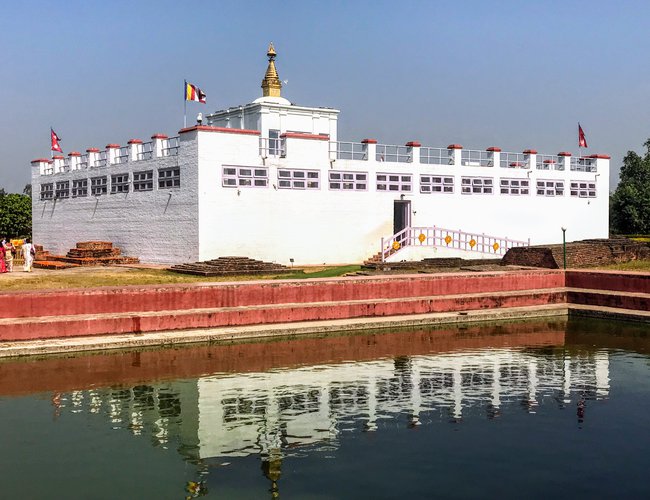
As Nepal is under a lockdown, Nepal is celebrating Buddha Jayanti in a low profile containing the mass gathering of people. Special program will be organized in Lumbini, birth place of Buddha and Kathmandu valley.
Anandakuti Bihar is going to host a special program in Swayambhu and other Bihars in valley are hosting the programs. Today is also national holiday in Nepal.
Buddha Jayanti is a special day for both Hindus and Buddhists in Nepal. On this day people celebrate the life of Lord Buddha; his Birth, Enlightenment and Mahaparinirvana (Death).
Buddhists in Nepal celebrate Buddha Jayanti on the full moon day in the Buddhist month of Baishakh. This is normally in May on the Gregorian Calendar. In Nepal, the birthday of Buddha (Buddha Jayanti) is of special significance to many because Nepal is the birth place of Siddhartha Gautama Buddha.
According to legend, Buddha was born at a pond in the Lumbini Garden in Nepal’s Rupandehi district. You can still see this site today, and it is a UNESCO World Heritage Site. It is also said that Buddha’s mother, Maya Devi, died seven days after giving birth to Buddha, and an idol of her is erected at the Lumbini site.
At the age of 29, Siddhartha left his royal palace and beheld the sufferings of the people all around him. He noticed disease, old age, and death, and then set out on a life-long quest to decipher the cause of all suffering.
It is taught by Buddhists that Buddha was born, attained nirvana, and died all on the same day, the full moon of Baishakh in India. And although people have believed these things and celebrated Buddha’s birthday for many centuries, it was only in 1950 that the exact official date of Buddha’s birthday was set by the World Fellowship of Buddhists.
Buddha’s conclusion was that desire is the cause of all suffering and of all evil. Thus, the elimination of desire is the cure. He also taught many other principles, morals, and mantras that Buddhists devoutly remember during Buddha Jayanti.
Lumbini, in the western Terai plains of Nepal, is the place where Prince Siddhartha (known as the Buddha) was born. The newly-born Prince is believed to have taken seven steps and uttered a timeless message to all humanity. It is believed that this happned in the beautiful Sal grove, which is now the focal point of the Lumbini Garden area.
The Nativity Sculpture at Lumbini that depits the birth of the Buddha.
As per widely held beliefs, Maya Devi, the Queen of Shakya King Suddhodhana of Kapilvastu, gave birth to the Prince Siddhartha while passing through the Lumbini Garden, on the day of "Vaishakha Poornima" (full-moon day of May) in 623 BC.
The Queen is believed to have taken a bath in Pushkarini (the Sacred Pond) and taken support of a tree branch in anticipation of the delivery, before giving birth to the little infant, who went on to become the Buddha.
Lumbini - the birthplace, Tilaurakot or Kapilvastu - where Buddha spent his first 29 years, Devdaha - his maternal home, and other sacred places and monasteries all over Kathmandu and Nepal, are crowded with devotees on the day of Buddha Jayanti.
In Kathmandu valley, Buddhists of all persuasions as well as pilgrims from abroad, honor the Buddha at the two great stupas Swyambhunath, Boudhanath and the largely Buddhist city of Patan. Activities at the main Buddhist s
The time of Gautama Buddha's birth and death is uncertain. However, most historians date his lifetime between 563-483 B.C.
For Buddhists, Bodh Gaya is the most important pilgrimage site related to the life of Gautama Buddha. The other three important pilgrimage sites are Kushinagar, Lumbini, and Sarnath. It is believed that Gautama Buddha obtained Enlightenment at Bodhagaya and he first taught the Dharma at Sarnath.
In North India Buddha is considered as the 9th incarnation and Lord Krishna as the 8th incarnation of Lord Vishnu. However, Buddha is never considered as an Avatar of Vishnu in South Indian belief.
In South India, Balarama is considered as the 8th incarnation and Krishna as the 9th incarnation of Lord Vishnu. Balarama is counted as an incarnation of Vishnu by the majority of Vaishnava movements. Even Buddhists do not consider Buddha as an incarnation of Lord Vishnu.
Sources: Various papers

More on Festivals and Culture

Latest Magazine
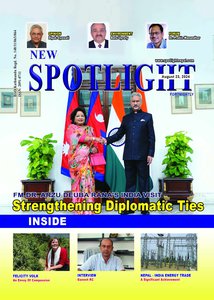
VOL. 18, No. 03, August.23,2024 (Bhadra-07. 2081) Publisher and Editor: Keshab Prasad Poudel Online Register Number: DOI 584/074-75

VOL. 18, No. 02, August.09,2024 (Sharwan-25. 2081) Publisher and Editor: Keshab Prasad Poudel Online Register Number: DOI 584/074-75

VOL. 18, No. 01, July.19,2024 (Sharwan-04. 2081) Publisher and Editor: Keshab Prasad Poudel Online Register Number: DOI 584/074-75

VOL. 17, No. 22, June.28,2024 (Ashar-14. 2081) Publisher and Editor: Keshab Prasad Poudel Online Register Number: DOI 584/074-75
+ 977 9860030842 +977 01 5455358

Celebrating Buddha Jayanti in Nepal: A Reflection of Rich Cultural Heritage

The celebrations are marked by devotion, spirituality, and a sense of community, and they offer a glimpse into the rich cultural diversity of Nepal
Buddha Jayanti , also known as Buddha Purnima, is one of the most important religious festivals celebrated by the Buddhist community around the world. The festival marks the birth, enlightenment, and death of Gautam Buddha, the founder of Buddhism. In Nepal, Buddha Jayanti is celebrated with great enthusiasm and devotion. The festival falls on the full moon day of the Nepali month of Baisakh, which usually falls in April or May.
Buddha Jayanti is a national holiday in Nepal, and it is celebrated with much fanfare in the Kathmandu Valley , especially in the ancient city of Lumbini, the birthplace of Lord Buddha. The celebrations usually start early in the morning, with devotees visiting Buddhist temples and monasteries to offer prayers, chant mantras, and light incense. The temples and monasteries are decorated with colorful prayer flags and flowers, and the sound of Buddhist hymns and prayers can be heard throughout the day.
The main celebration of Buddha Jayanti takes place at Lumbini, the birthplace of Lord Buddha, located in the southern plains of the country. Lumbini is a UNESCO World Heritage Site and a place of pilgrimage for millions of Buddhists around the world. The main celebration in Lumbini takes place at the Maya Devi Temple, which is believed to be the exact spot where Lord Buddha was born. Devotees gather at the temple to offer prayers and participate in various religious ceremonies.

Buddha Jayanti is an important celebration in Nepal, particularly at the Swayambhunath Stupa. This ancient stupa, believed to be over 2,000 years old, is one of the most sacred Buddhist sites in the country . Devotees from far and wide gather at the stupa to pay their respects to Lord Buddha by offering prayers, lighting butter lamps, and walking around the stupa in a clockwise direction, which is considered to be auspicious in Buddhism. The festival is a vibrant display of religious fervor and cultural richness, as the stupa is decorated with colorful flags and flowers. The procession of monks and devotees carrying the sacred statue of Lord Buddha around the stupa is the highlight of the festival .

Similarly, the Boudhanath Stupa in the Boudha neighborhood of Kathmandu is also an important destination for celebrating Buddha Jayanti. The stupa is a grand celebration of the birth, enlightenment, and death of Lord Buddha. Devotees flock to the stupa to offer their prayers, light butter lamps, and spin prayer wheels. The stupa is adorned with colorful prayer flags and flowers, and the air is filled with the sound of Buddhist chants and hymns. The celebration at Boudha is a beautiful showcase of Nepal 's rich cultural heritage and a reflection of the profound influence of Buddhism in the country. The festival brings a sense of spiritual renewal and community as people gather to celebrate the teachings of Lord Buddha.
The celebrations of Buddha Jayanti in Nepal are not limited to Kathmandu and Lumbini; they are also held in other parts of the country. In cities like Pokhara, Bhaktapur, and Patan, Buddhist monasteries and temples organize special prayers and rituals to mark the occasion. The festival provides an opportunity for Nepalis to come together and celebrate their rich cultural and religious heritage.

Apart from the religious celebrations, Buddha Jayanti is also an occasion for social and cultural events in Nepal. Various cultural programs, exhibitions, and fairs are organized across the country to showcase the art, music, and literature of Nepal. The festival is an opportunity for people to learn more about Buddhism and its teachings and to appreciate the cultural diversity of Nepal.

Buddha Jayanti is a significant festival in Nepal that celebrates the life and teachings of Lord Buddha. The festival provides an opportunity for Nepalis to come together and celebrate their cultural and religious heritage . The celebrations are marked by devotion, spirituality, and a sense of community, and they offer a glimpse into the rich cultural diversity of Nepal. As Nepal continues to recover from the devastating effects of the COVID-19 pandemic, the celebration of Buddha Jayanti provides hope and inspiration for a better tomorrow.
The Aesthetics Of Bouddha
In frames: daily life of people in bouddha, evening at swayambhunath, in frames: swayambhunath stupa, you may also like.

related article
The legendary yeti of the himalayas, stargazing in nepal-best locations for night sky photography.
.png)
Must-Do Things in Nepal
.png)
How to Plan a Last-Minute Trip
Join our newsletter.

nepal traveller digital publication pvt. ltd
copyright © nepal traveller digital publication pvt. ltd
all rights reserved
Sanepa, Lalitpur
tel: + 977 9860030842 +977 01 5455358
deals & steals
email: [email protected]

powered by : nepal traveller digital publication pvt. ltd
Privacy policy, developed by : web house nepal.

- Gold/Silver
The day Buddha was born, Buddha Jayanti. | Hamro Patro
ब्लग - साहित्य / नेपाली चाडपर्व तथा महत्त्वपूर्ण दिनहरू, the day buddha was born, buddha jayanti..
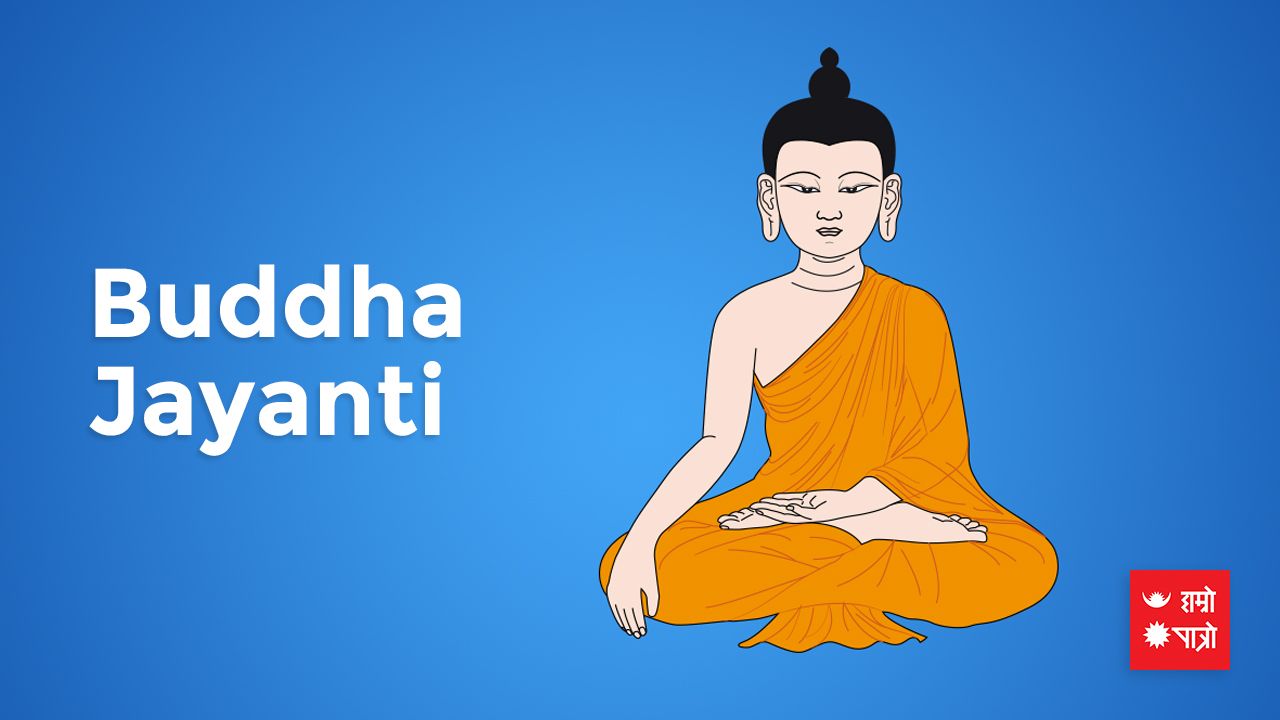
The Sanskrit word Buddha meaning awakening or the awakened. Buddha, a great personality, teacher, philosopher, governess, and guide, completely awakened from the desires of worldly attachments. Such a great teacher who in his discourse helped to awaken people from worldly lusts and tensions by recognizing religion and law in the world rather than saying that God created the world. Just as when buying a product or a machine, you can use the booklet/ user's manual with the facts of how to use it and not, so the Buddha has given the use of the manual about the ease and success of life and the world. The Buddha, who taught to sow the seeds of truth and peace in the field of the heart, was born in 543 BC in the middle of a saline orchard in the present-day Kapilvastu district of Nepal. Today, the world has followed the Buddha's ideals. The Buddha is the master of the world for peace, truth, non-violence, and simplicity. The incessant flow of his knowledge more than 2500 years ago has given a new calm dimension to the human community. Let's discuss this great man Gautam Buddha on the day of Baishakh Shukla Purnima, i.e. Buddha Jayanti. This Baishakh Shukla Purnima is of great importance in the life of Gautam Buddha. His birth, attainment of knowledge, and Samadhi took place on this Baishakh Purnima day. Today, Buddha Jayanti is celebrated in its way from the North to the South Pole of the world, from the Dead Sea to the Marianas Trench in the Pacific Ocean, and from Benaras to Beijing. Even though the physical body is destroyed, the Buddha is still present in the minds of all of us through his knowledge, words, and spiritual skills. The real name of the Buddha is Siddhartha Gautama and it is said that he walked 7 steps to the north with his birth and pointed his finger towards the wind.According to this, he is considered to be the great soul and the last incarnation of God on earth. This pool, which was bathed by Siddhartha Gautam, is called Siddhartha Kunda, his mother died tragically after 7 days of Buddha's birth. However, the highly disciplined and dignified prince Siddhartha Gautam married Yashodhara at the age of 16. At the age of 29, Siddhartha Gautama, who had the habit of showing deep affection to all living beings and creatures, left all comforts and set out in pursuit of knowledge and reasons. This prince was in search of knowledge to alleviate the pain and suffering of human life, and the philosophy and knowledge gained by his penance years later is the Buddhist manifest. On the path to enlightenment, Siddhartha Gautama observed the condition of the sick, the wounded, the greedy, as well as the people who became monks by donating everything to others. After that, Siddhartha Gautama, who decided to become a monk, is the Gautama Buddha in the world today. Thus, searching for the cause of worldly misery, he left home at the age of 29 and took penance under a tree at a place called Bodh Gaya.During his penance, Buddha attained Samyak Samvodhi, that is, great knowledge. In the years that followed, he shared the same knowledge and was called Lord Buddha all over the world. Buddhism is not only an atheistic religion but also a philosophy of non-violence, iniquity, and untruth, a universal philosophy. This religion is based on the teachings of Gautama Buddha and his followers under Shakyamuni. Gautama Buddha is considered to be the fourth samyak sambuddha of the present age. Buddhism is practiced by over 350 million people worldwide and is the fourth largest religion in the world. Nepal is also called the land of peace as the origin of this Buddha philosophy is spread all over the world. Therefore, various countries around the world have built wonderful temples and monasteries in the birthplace of the Buddha today. Buddha attained Nirvana at the age of 80. He attained enlightenment after intense ascetic meditation at Bodh Gaya. The collection of all the teachings and teachings of Buddhism is called Tripitaka. The Tripitaka describes in detail the 32 physical qualities of Buddhism. There are 84,000 Gyan Sutras, including 82,000 from Buddha and 2,000 from his chief disciples. The main philosophical principle of Buddhism is pratitya (samutpada), the basic virtues of impermanence, misery, and selflessness are considered to be the basic principles of Buddhism. Gautama Buddha is considered by Hindus to be one of the ten incarnations of Lord Vishnu. Gautam Buddha is also called the star of Asia. As Buddha was born in Nepal, the Government of Nepal has been giving public leave every year on the occasion of Buddha Jayanti. Buddha means a great man who has attained enlightenment or has recognized the ultimate truth. If the Buddha's knowledge is absorbed, the earth will be a wonderful planet, the world needs another Buddha, come back Shakyamuni, bring the message of peace. Happy Buddha Jayanti Uvauli festival And how ready are you to dance Sakela Chandi in the midst of this? Chandi dance, which is very popular in the Kirant community, is danced wishing good health, longevity, and prosperity to all.Let's talk about the spring festival of Uvauuli celebrated by the world-famous Kirant community, the descendants of nature. Priests of Nature and warriors of truth, Kirant community celebrates this auspicious festival on the full moon day of Baishakh with the wishes to harvest adequate grains, adequate rainfall, and peace across the world. Since Chandi dance is performed today, it is also called Chandi Purnima, Chandi Purnima is a joyful expression upon the creation of Sumnima, Kirant form of Parwati. There are two agriculture-oriented festivals which are all about agriculture and guardianship. These two festivals (Ubhauli and Udhauli) are celebrated by the Kirant community. Ubhauli is celebrated on the full moon of Vaishakh and Udhauli on the full moon of Mangsir. Ubhuli is celebrated as an opportunity to plant crops and to thrive. In Uvauli, Sumnima and Paruhang are believed to protect the entire universe. This festival started from Baishakh Shukla Purnima and is celebrated continuously for one month.Happy Uvauli festival to the Kirant community all over the world, may this year's Chandi dance do good to all. Chandeshwori Jatra Chandeshwori Jatra is celebrated grandly from two days of Baishakh Shukla Purnima. The Chandeshwori Jatra has officially started today. Especially in the city of Banepa near Kathmandu and the surrounding area, the procession is super lively. In this procession, it is customary to take the chariot with Bajagaja to Chandeshwori and return the next day with the idol of the goddess in the chariot. Another highlight of the Jatra is the Kalandan. In the Jatra, it is customary to throw animal meat as offerings to the crowd of devotees, these offerings are considered Kalandan. Anyone who gets a piece of meat thrown in the crowd is considered lucky. People from Dolakha, Lalitpur, Bhaktapur, Kathmandu, Ramechhap, and other places come to participate in this ancient procession. The subject of the origin of the goddess Chandeshwori is connected with a demon named Chandasur, it is said that Chandeshwori killed Chandasur in the form of a goddess after he started causing trouble after receiving a boon from Lord Mahadev. The joy of Chandasur's death is said to be the highlight of this procession. Chandeshwari is considered as the deity of the Newa community around Banepa, after the slaying of Chandasur, Chandeshwori was welcomed in Devlok with specific arrangements and it is said that this procession was started from Satya Yuga with the same happiness. This pilgrimage is an immaculate example of eternal rites and ancient civilization. At least 14 sacrifices are performed in the procession. It is customary for the Newari community to invite relatives to a feast after the procession. On the day before the procession, which is celebrated for two days on Baisakh Shuklapurni and the next day, it is customary to worship the ornaments and coins used by the then, King Maharaj. Apart from Chandeshwari Jatra, Bhagwati Mahalakshmi's procession is held in Ugrachandi Nala in Kavre district, Nasika Bhagwati's procession in Sanga, Shwetaganesh's procession in Chaukot, Shweta Bhairab's procession in Shrikhandpur and Indreshwar's procession in Panauti. COVID19 outbreak has several adverse impacts and restrictions upon religious commemorations worldwide, this year is different but the belief and excitement shall remain the same. Congratulations to all on this year's Chandeshwari Jatra, may Chandeshwori come in every age to kill the Chandasuras. May religion prevails, may iniquity be. The tortoise form of Vishnu is called Kurma. Kurma Jayanti falls on the full moon of Baishakh Shukla Paksha. It is said that this Kurma incarnation carried the Madranchal mountain on his back during Kshir Sagar Manthan. The first incarnation of Vishnu is the fish incarnation (Matsya Avataar), while the second incarnation is the Kurma incarnation. Vishnu is believed to have appeared in the incarnation of Kurma, which can be reasonably present in both water and land. It is customary to fast on this day, to stay awake one day in advance, to recite Vishnu Sahasranama and to recite other Vedic mantras. It is also believed that giving alms on this day is very beneficial. Due to the belief in the presence of Yogamaya in the Kurma incarnation, it is considered especially fruitful to start construction works, arts and crafts today. Best wishes GorakhNath jayanti On the day of Baishakh Shukla Purnima, many great men have appeared on this earth. Guru Gorakhnath is one of these great men and Siddhayogis. There are many important dimensions to this holy day, the birth of this great Siddha Yogi, the founder of the Nath sect. Guru Matsyendranath, born in Bungmati, Nepal, is a most followed guru of the people of Kathmandu, a contemporary deity and a perfect teacher. Guru Gorakhnath came to earth as the son and disciple of this perfect Guru, Guru Matsyedrnath. Followers of Gorakhnath Math do not believe in Guru Gorakhnath Jayanti or the birth and death of Guru Gorakhnath, according to them, Gorakhnath Guru is a perfect Guru from eternity who is completely different from the cycle of life and death. There are statements that the royal family of Nepal is also pleased with the grace of Guru Gorakhnath. The name of the Gorkha state also coincides with Gorakhnath. Even the statements given to Prithvi Narayan Shah by Guru Gorakhnath before the unification are still heard today. According to the Nath sect, Vishnu found only water around him when he wished to create, and after meeting Guru Gorakhnath in Patala and scattering the ashes given by Gorakhnath in the water, there is a statement that the glory of that ashes fell to the ground and created land. The meaning of Gorakh is understood to be the protection of the earth. Guru Gorakhnath has made a remarkable contribution in protecting the Sanatan culture and advancing the awakening by simplifying the teachings of Adinath Mahadev. According to Gargasahinta, Mahadev himself had said this अहमेवास्मि गोरक्षो मद्रूपं तन्निबोधत। योग मार्ग प्रचाराय मयारूपमिदं धृतम् That is, I am Goraksh, to know Goraksh as my own form, I undertook this form for the propagation of the yoga path. Many good wishes to all on the occasion of the birth anniversary of the great Guru Gorakhnath, who has attained complete mastery and perfection over the true form and nature of Shiva. Suyog Dhakal
यसमा तपाईँको के प्रतिक्रिया छ?
Welcome to Hamro Patro Community
तपाईँले आजको मिति भन्दा पछिको नोट हाल्नु भएको छैन । तपाईँले जन्मदिन, मिटिङ, सम्झनु पर्ने कुराहरु, बिल तिर्ने दिन आदि टिपोट टिप्न सक्नुहुन्छ ।

Ace the Himalaya
Trekking in Nepal, Peak Climbing, Mt Biking and Tours in Nepal, Bhutan and Tibet
- Everest Base Camp Trek - 14 Days
- EBC Trek with Helicopter Return - 12 Days
- Everest Base Camp Luxury Trek - 14 Days
- Everest Base Camp with Island Peak - 19 Days
- Everest Three Passes Trek - 20 Days
- Annapurna Base Camp Trek - 13 Days
- Annapurna Circuit Trek - 19 Days
- Ghorepani Poon Hill Trek - 9 Days
- Manaslu Circuit Trek - 15 Days
- Gokyo to Everest Base Camp Trek - 17 Days

Buddha Jayanti: A Celebration of Peace and Enlightenment
Of all the full moon days, the one that falls in the Nepali month of Baisakh (April - May) is celebrated as "Buddha Jayanti" or "Buddha Purnima."
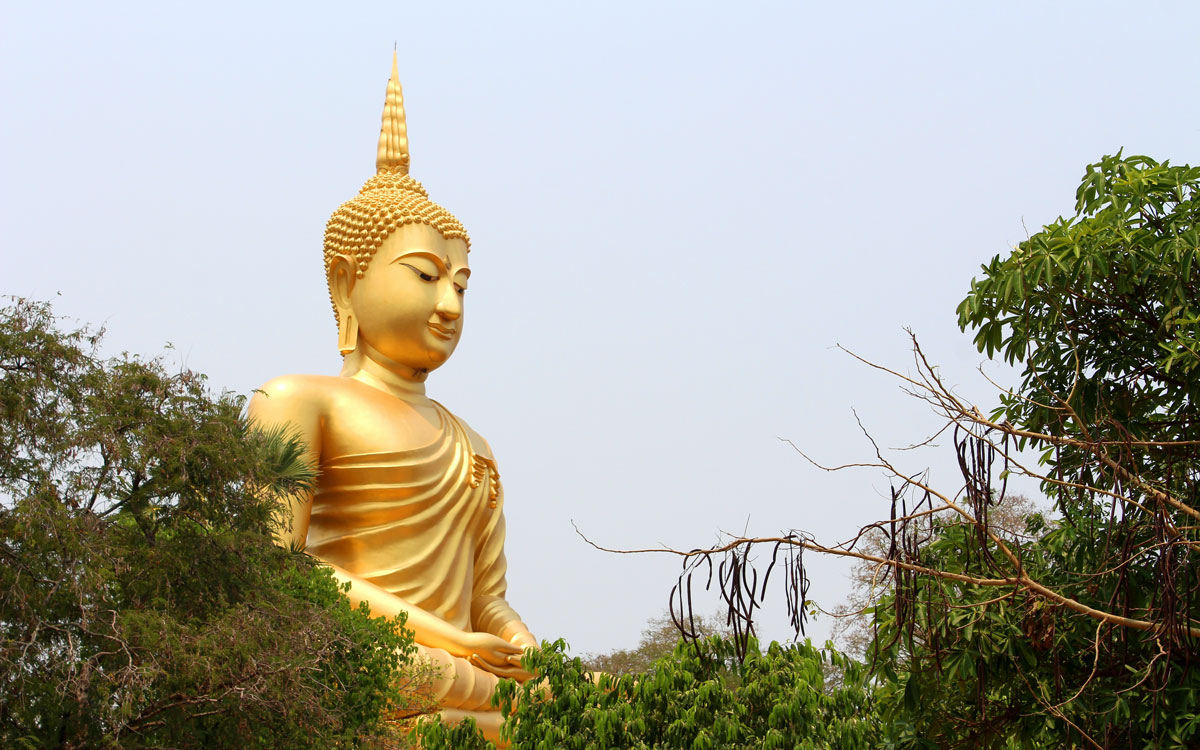
Of all the full moon days, the one that falls in the Nepali month of Baisakh (April – May) is celebrated as “Buddha Jayanti” or “Buddha Purnima.”
Nepal, the birthplace of Siddhartha Gautam, better known as Buddha, holds the Buddha Jayanti festival in high regard.
This significant occasion marks the birth, enlightenment, and death of Lord Buddha, all of which, according to tradition, occurred on the same full moon day of the Baisakh month (April-May).
The festival, also known as Buddha Purnima, is celebrated with great reverence and enthusiasm across the country, reflecting Nepal’s rich Buddhist heritage and the enduring impact of Buddha’s teachings.
Historical and Spiritual Significance
Buddha Jayanti is a day of profound spiritual importance. Siddhartha Gautama was born in Lumbini, Nepal, around 563 BCE.
Renouncing his royal life, he embarked on a quest for truth and enlightenment, eventually attaining Buddhahood under the Bodhi tree in Bodh Gaya, India. His teachings have since inspired countless individuals worldwide.
The festival commemorates three pivotal events in Buddha’s life:
- Birth : Siddhartha Gautama was born into the Shakya royal family in Lumbini.
- Enlightenment : After years of meditation and asceticism, he attained enlightenment under the Bodhi tree in Bodh Gaya, India.
- Parinirvana : At the age of 80, Buddha passed away in Kushinagar, India, achieving Parinirvana (final nirvana).
Celebrations Across Nepal
Buddha Jayanti is not only celebrated with great reverence in Lumbini, the birthplace of Buddha, but also in Bodh Gaya, India, where he attained enlightenment.
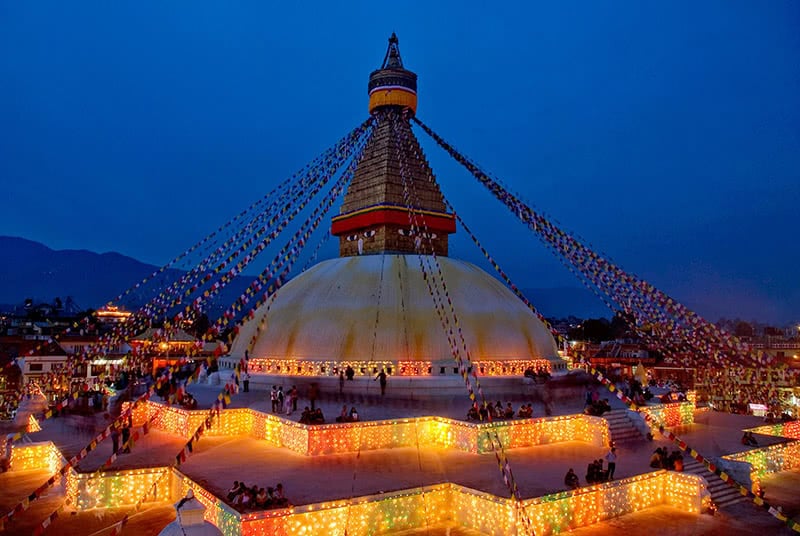
For those unable to travel to these sacred sites, the festivities extend to Nepal’s holiest Buddhist locations in Kathmandu, such as Swayambhunath, Boudhanath, and Kopan Monastery.
These sites become vibrant centers of devotion, drawing pilgrims and locals alike to honor Buddha’s life and teachings.
Lumbini: The Birthplace of Buddha
Lumbini, the birthplace of Buddha, is the heart of Buddha Jayanti celebrations. Pilgrims and tourists from around the globe converge here to partake in the festivities.
The Mayadevi Temple, the exact birthplace, becomes a focal point of worship and celebration. Devotees light butter lamps, offer flowers, and chant sacred Buddhist texts, creating an atmosphere of peace and spirituality.
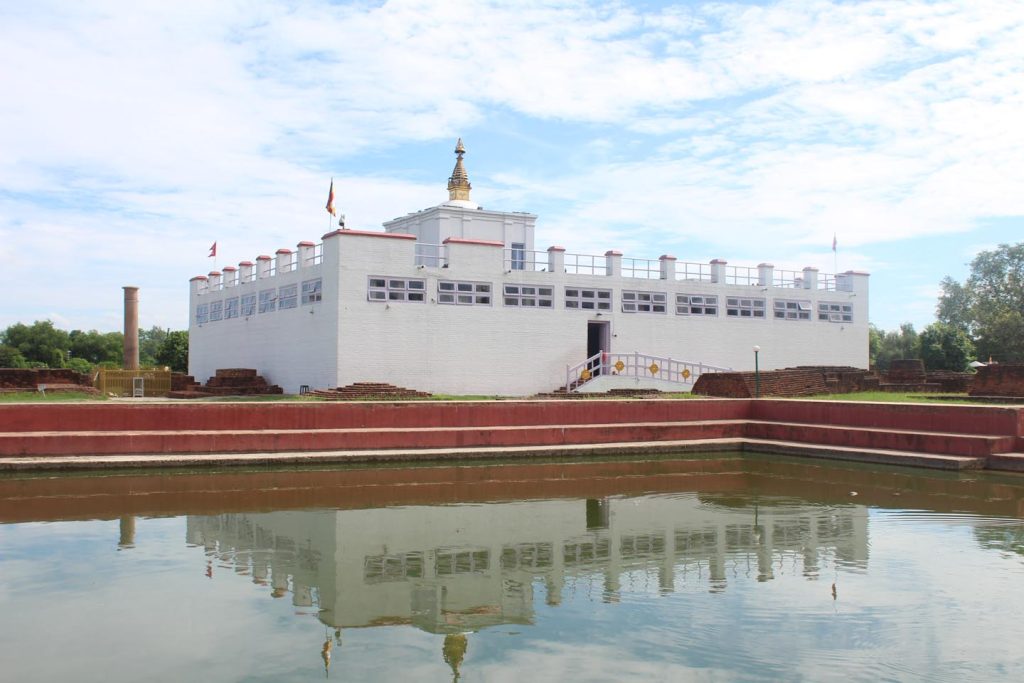
The Lumbini Garden, a UNESCO World Heritage Site, hosts numerous events such as peace walks, meditation sessions, and discussions on Buddha’s teachings.
These activities, organized by the Lumbini Development Trust, emphasize the timeless relevance of Buddha’s message of peace and compassion.
Swayambhunath and Boudhanath Stupas
In Kathmandu, the celebrations are centered around the Swayambhunath (Monkey Temple) and Boudhanath stupas. These iconic structures are adorned with prayer flags and illuminated with lamps.
Monks perform rituals and prayers, while devotees circumambulate the stupas, spinning prayer wheels and chanting mantras.
At Swayambhunath, early morning prayers set the tone for the day’s events. The stupa, perched atop a hill, offers a panoramic view of the city, making it a popular spot for both worshippers and tourists.
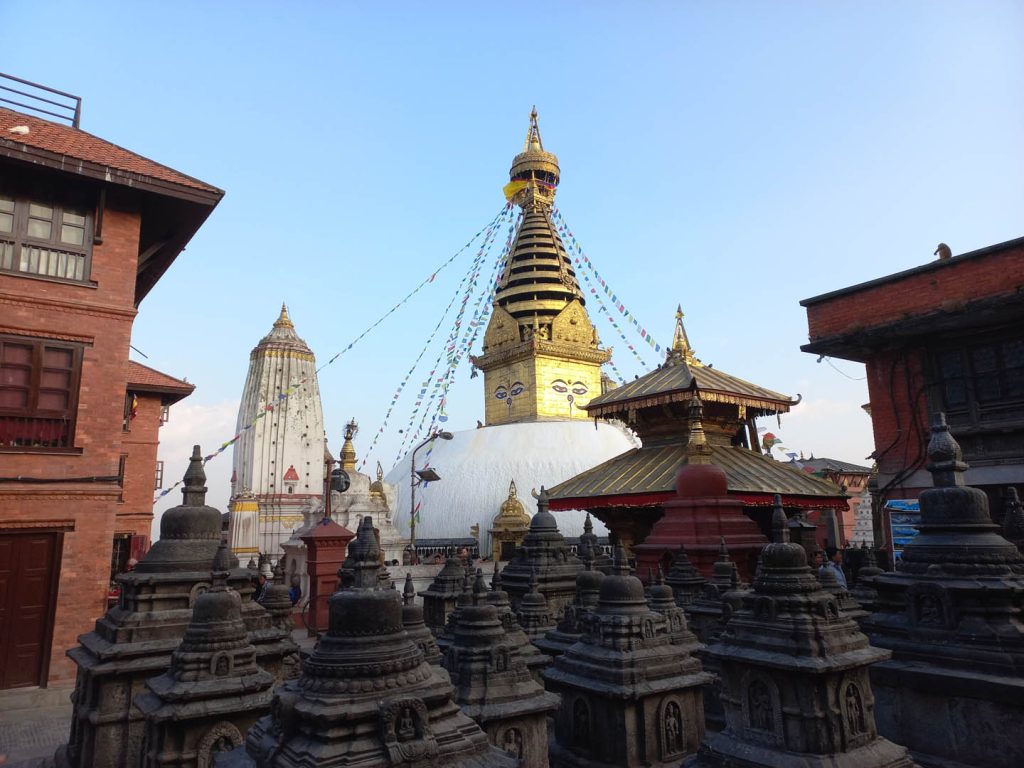
Boudhanath, one of the largest stupas in the world, becomes a vibrant hub of activity, drawing people from diverse backgrounds to celebrate and reflect on Buddha’s teachings.
At Swayambhunath and Boudhanath, devotees engage in the sacred practice of Kora, the act of walking clockwise around the stupas while spinning prayer wheels and reciting mantras.
This ritual symbolizes the path to enlightenment and serves as a meditative practice, allowing participants to reflect on the Buddha’s teachings and seek spiritual merit.
The atmosphere is charged with the rhythmic chanting of prayers, the fluttering of prayer flags, and the glow of butter lamps, creating a deeply spiritual and communal experience.
Other Monasteries and Temples
Beyond Lumbini and Kathmandu, Buddha Jayanti is celebrated in monasteries and temples throughout Nepal. The chants of “ Om Mani Padme Hum ” echo in the air as communities gather to offer prayers and engage in charitable acts.
Educational institutions organize events to discuss Buddha’s life and teachings, fostering a deeper understanding among students.
In regions like Mustang and Solu-Khumbu, where Buddhism is integral to daily life, the celebrations are particularly grand. Tengboche Monastery in the Everest region and Thubten Shedrup Ling in Pokhara hold special ceremonies, drawing large crowds.
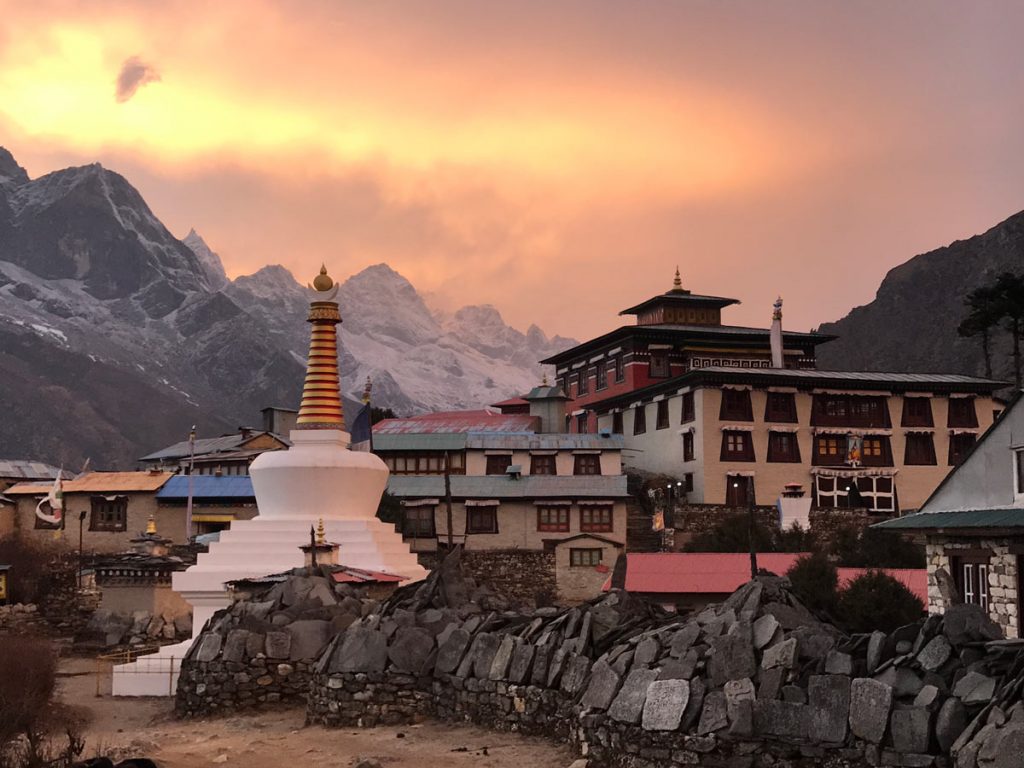
These monasteries conduct special prayer sessions, where monks in vibrant robes chant scriptures and perform intricate rituals.
The participation of the local communities in these celebrations is noteworthy. Families come together to prepare special vegetarian meals, which are then shared among the community members.
This practice of communal dining not only reinforces social bonds but also underscores the Buddhist principle of generosity.
Social Celebrations
Buddha Jayanti serves as a reminder of Nepal’s profound cultural and religious diversity. Despite being a Hindu-majority nation, the respect and reverence for Buddha and his teachings highlight the nation’s inclusive spirit.
The festival promotes interfaith harmony, with people from different religious backgrounds participating in the celebrations.
The festival also provides an opportunity for younger generations to connect with their cultural heritage. Schools and colleges often organize essay competitions, art exhibitions, and debates on themes related to Buddha’s life and teachings.
Furthermore, the festival has a significant economic impact, particularly in regions like Lumbini and Kathmandu, which see a surge in tourism.
Hotels, restaurants, and local businesses benefit from the inflow of visitors, providing a boost to the local economy. This economic activity is crucial for the development of these regions and the well-being of their residents.
Global Recognition and Pilgrimage
Lumbini, recognized as a UNESCO World Heritage Site, attracts a global audience during Buddha Jayanti. Pilgrims and tourists from countries like Sri Lanka, Thailand, Myanmar, Japan, and China visit Nepal to partake in the celebrations.
This influx not only boosts the local economy but also fosters cultural exchanges, strengthening Nepal’s ties with the international Buddhist community.
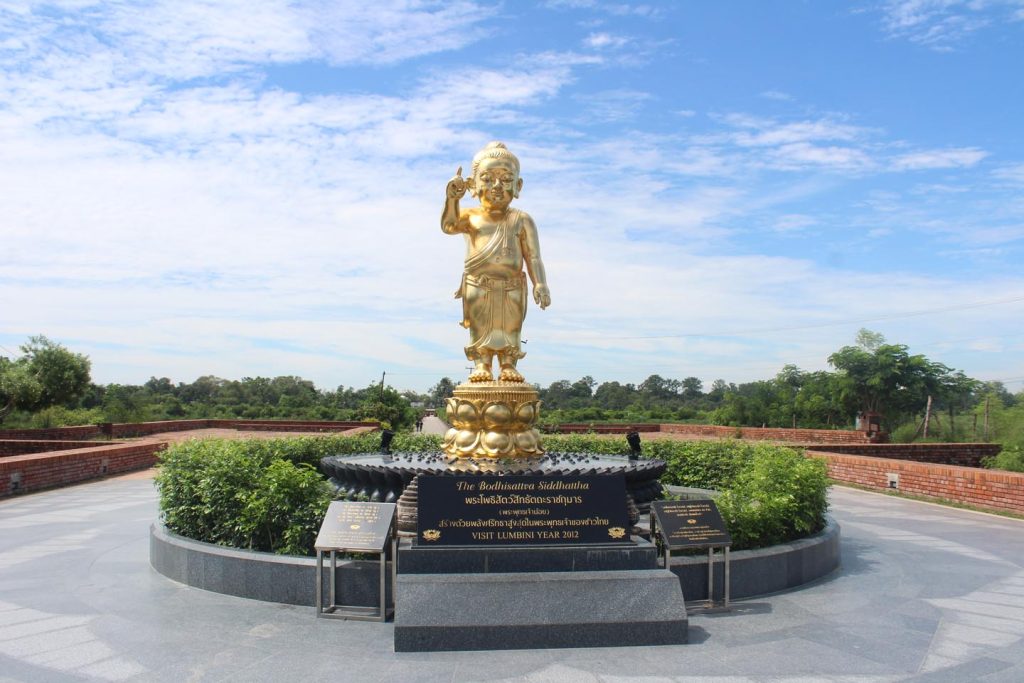
The international pilgrimage underscores the universal appeal of Buddha’s teachings. It is common to see groups of pilgrims chanting prayers in different languages, a testament to the global reach of Buddhism.
These interactions often lead to cultural exchanges, where pilgrims share their unique traditions and practices, enriching the festival’s diversity.
The government of Nepal, along with various non-governmental organizations, plays a pivotal role in promoting Lumbini as a global center for peace and pilgrimage.
Efforts are made to improve infrastructure, ensure the safety and comfort of pilgrims, and preserve the sanctity of the holy site. These initiatives have positioned Lumbini as not just a pilgrimage site but a beacon of global peace and understanding.
Reflection and Modern Relevance
Buddha Jayanti is a time for reflection on the values of non-violence, compassion, and mindfulness.
During Buddha Jayanti, people reflect on and discuss the teachings of Lord Buddha, which include the Five Precepts, fundamental ethical guidelines for followers of Buddhism. These precepts are:
- Refrain from harming any living being (ahimsa).
- Refrain from taking life (not to kill any living creatures).
- Refrain from taking what is not given (not to steal).
- Refrain from sexual misconduct.
- Refrain from false speech (not to lie).
- Refrain from intoxicants that cloud the mind (not to consume substances that intoxicate the brain).
These principles form the foundation of ethical conduct in Buddhism and are integral to the spiritual practices and daily lives of Buddhists, especially emphasized during the sacred observances of Buddha Jayanti.
In a world often marked by conflict and stress, Buddha’s teachings offer a path to inner peace and societal harmony.
The festival encourages individuals to introspect on their actions and thoughts, fostering a more compassionate and understanding society.
The teachings of Buddha, which emphasize the Four Noble Truths and the Eightfold Path, provide practical guidance for leading a balanced and fulfilling life.
During Buddha Jayanti, these teachings are revisited and discussed in various forums, helping individuals find relevance in their daily lives.
Meditation sessions and mindfulness workshops are also organized, encouraging people to incorporate these practices into their routines.
The modern relevance of Buddha’s teachings is evident in the growing interest in mindfulness and meditation worldwide. These practices, rooted in Buddhist philosophy, have been scientifically proven to reduce stress and enhance well-being.
Buddha Jayanti serves as a reminder of these timeless principles, urging people to adopt a more mindful and compassionate approach to life.
Environmental Significance
Another aspect of Buddha Jayanti that has gained prominence in recent years is its environmental significance. During the celebrations, there is a conscious effort to promote sustainable practices.
In Lumbini, for example, efforts are made to minimize plastic use and promote waste segregation. Tree plantation drives are organized, and the importance of maintaining a clean and green environment is emphasized.
These initiatives not only enhance the beauty of the sacred site but also serve as a reminder of our responsibility towards the planet.
The connection between Buddhism and environmentalism is also highlighted through various talks and seminars.
Scholars and environmentalists discuss the relevance of Buddhist teachings in addressing contemporary environmental challenges.
This intersection of spirituality and environmentalism adds a meaningful dimension to the Buddha Jayanti celebrations.
Buddha Jayanti in Nepal is more than a festival; it is a profound celebration of enlightenment and peace. It honors the life and teachings of Buddha, bringing together people from diverse backgrounds to celebrate shared values of compassion and wisdom.
From the serene ceremonies in Lumbini to the vibrant festivities in Kathmandu, Buddha Jayanti encapsulates the essence of Nepali culture and spirituality. It is a day of reflection, celebration, and unity, where the teachings of Buddha illuminate the path towards a peaceful and compassionate world.
As Nepal continues to cherish and uphold these traditions, Buddha Jayanti will remain a symbol of enlightenment, guiding future generations towards a brighter and more harmonious future.
Related Blogs & Articles
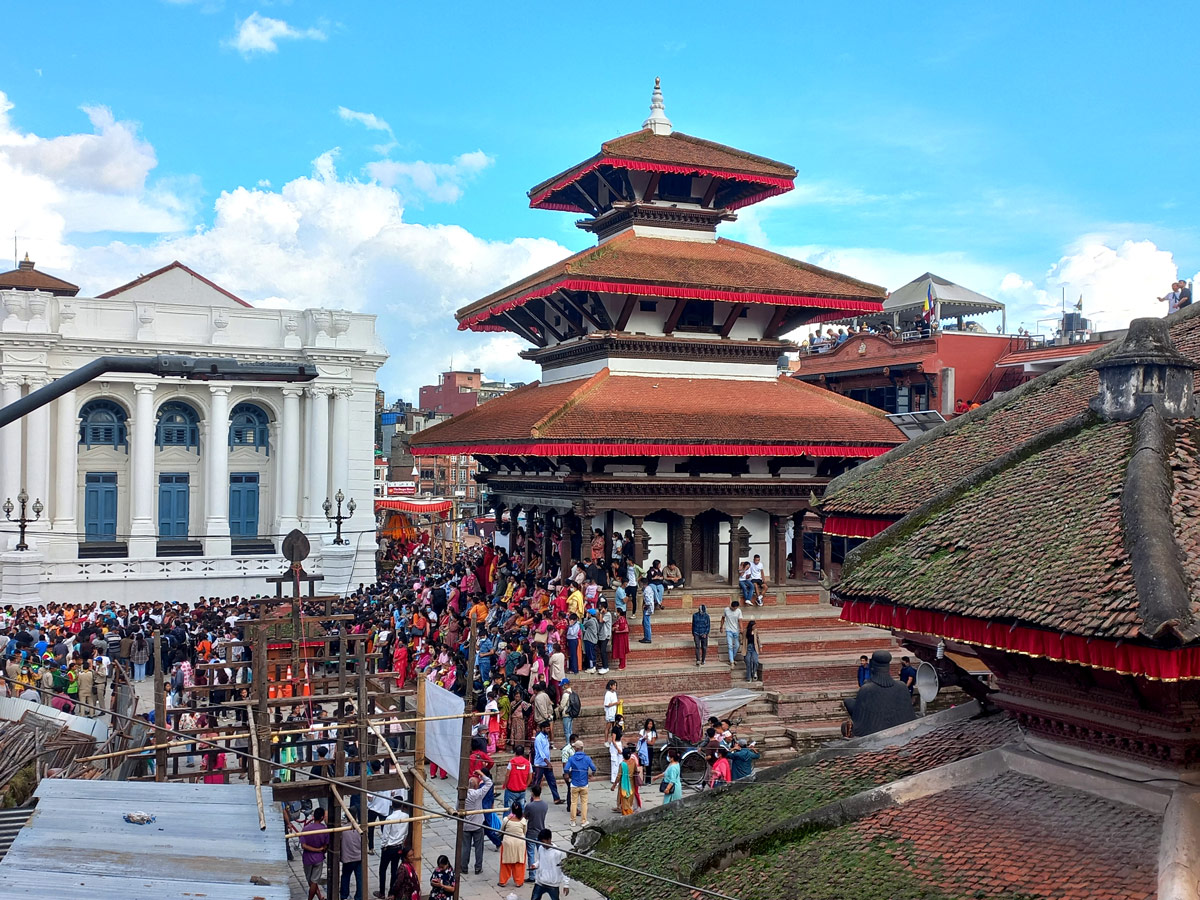
Jatras of Kathmandu Valley
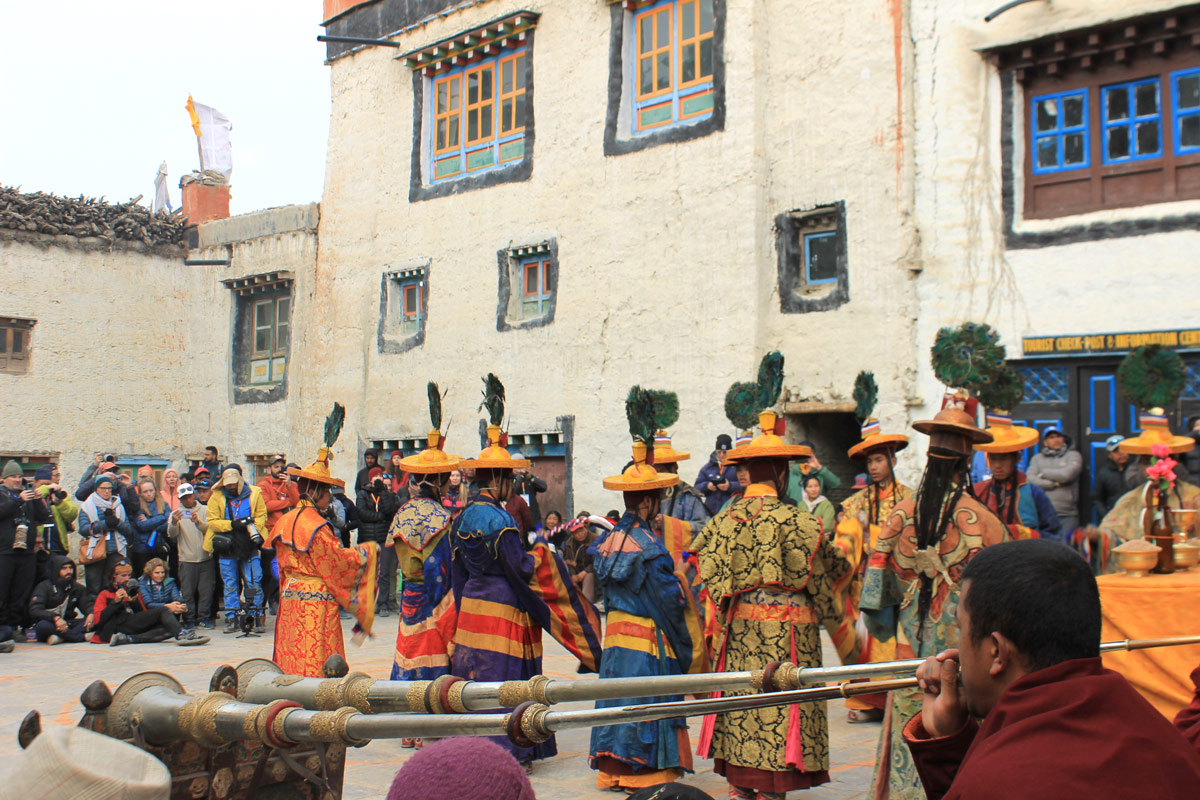
Tiji Festival in Upper Mustang
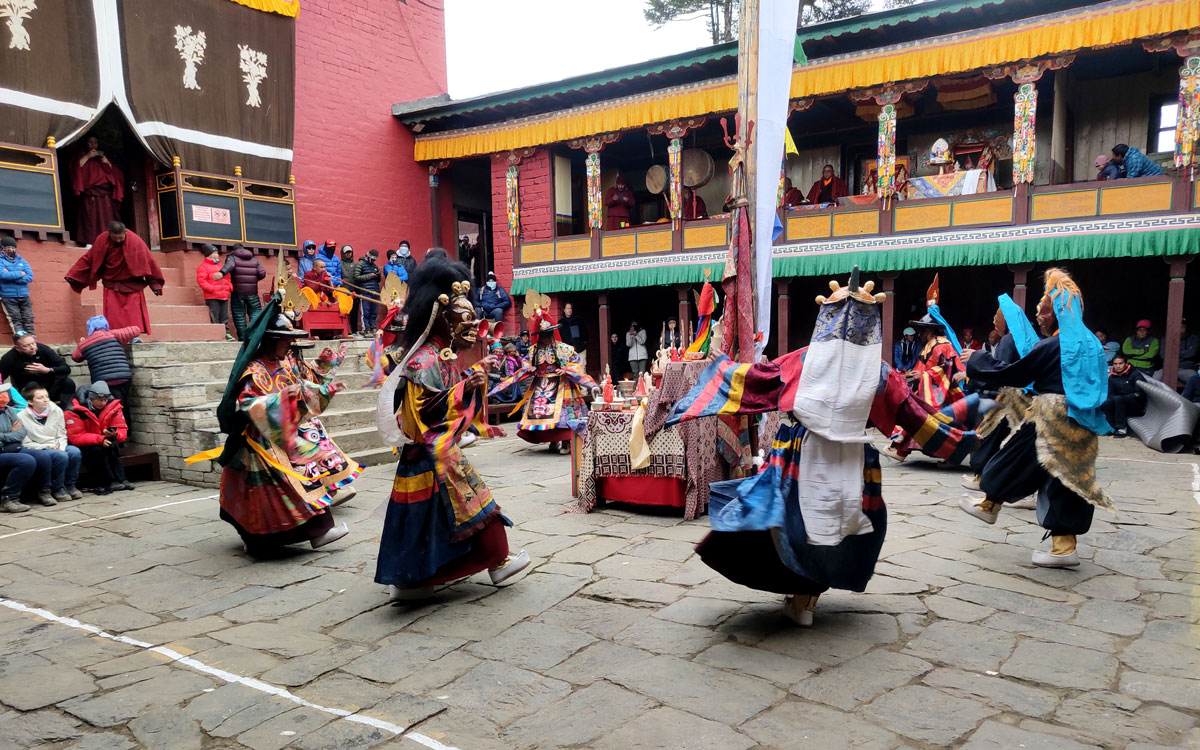
Mani Rimdu – Buddhist Festival at Tengboche Monastery

- Phone This field is for validation purposes and should be left unchanged.
Trekking in Nepal
Climbing and expedition, cultural tour and sightseeing, cycling and mountain biking, luxury treks, luxury tours, multi country tours, voluntourism trips, extend your trip.
- Everest Base Camp Heli Trek – 8 Days
- Everest Panorama Trek – 9 Days
- EBC Trek with Helicopter Return – 12 Days
- Everest Base Camp Trek – 14 Days
- Gokyo Lake Trek – 13 Days
- Gokyo and Renjo La Pass Trek – 14 Days
- Everest Base Camp Trek without Lukla Flight – 17 Days
- Gokyo to Everest Base Camp Trek – 17 Days
- Everest Base Camp with Island Peak – 19 Days
- Everest Three Passes Trek – 20 Days
- Everest High Passes and Island Peak – 23 Days
- Classical Everest Base Camp Trek – 21 Days
- Langtang Valley Trek – 10 Days
- Langtang Valley Ganja La Pass Trek – 14 Days
- Langtang Helambu Trek – 17 Days
- Ghorepani Poon Hill Trek – 9 Days
- Mardi Himal Trek – 10 Days
- Annapurna Base Camp Trek – 13 Days
- Himalayan Highlights – 13 Days
- Nar Phu Valley Trek with Annapurna Circuit – 18 Days
- Annapurna Circuit Trek – 19 Days
- Tilicho Lake Trek With Thorong La Pass – 19 Days
- Khopra Danda Trek – 11 Days
- Shivapuri-Chisapani Trek – 4 Days
- Upper Mustang Trek (Drive & Trek) – 16 Days
- Tsum Valley Trek – 16 Days
- Manaslu Circuit Trek – 15 Days
- Dhaulagiri Circuit Trek – 21 Days
- Upper Dolpo Trek – 25 Days
- Kanchenjunga Base Camp Trek – 29 Days
- Yala Peak Climbing – 13 Days
- Island Peak Climbing – 15 Days
- Mera Peak Climbing – 19 Days
- Everest Base Camp and Lobuche East – 18 Days
- Tent Peak Climbing with Annapurna Base Camp – 18 Days
- Pisang Peak and Thorung La Pass – 21 Days
- Ama Dablam Expedition – 29 Days
- Kathmandu Cultural Heritage Tour – 3 Days
- Kathmandu Heritage – 3 Days
- Inheritances of Kathmandu – 4 Days
- Glimpses of Kathmandu & Nagarkot – 5 Days
- Kathmandu and Pokhara Unveiled – 5 Days
- Explore Kathmandu – 6 Days
- Glimpse of Nepal – 8 Days
- Nepal Heritage Tour – 10 Days
- Nepal Adventure Tour – 11 Days
- Nepal Multi Sports Adventure – 11 Days
- Nepal Vista – 10 Days
- Nepal Highlights – 14 Days
- Experience Nepal – 15 Days
- One Day Biking Trip – Kathmandu – 1 Day
- Annapurna Circuit Biking – 14 Days
- Upper Mustang Biking – 16 Days
- Kathmandu Valley Rim Biking – 8 Days
- Annapurna in Luxury – 9 Days
- VVIP Everest Base Camp Trek – 10 Days
- Everest View Luxury Trek – 11 Days
- Everest Base Camp Luxury Trek – 14 Days
- Everest Base Camp Deluxe Trek – 16 Days
- Mt Everest Base Camp to Gokyo Trek – 19 Days
- Kathmandu Luxury Tour – 3 Days
- Kathmandu and Pokhara Luxury Tour – 5 Days
- Nepal Multi Sport Luxury Adventure – 11 Days
- Best of Nepal – 14 Days
- Trishuli River Rafting – 1 Day
- Everest Base Camp Helicopter Tour – 1 Day
- Everest Base Camp Heli Tour with Gokyo Extension – 1 Day
- Langtang Heli Sightseeing – 1 Day
- Pokhara and Annapurna Heli Sightseeing – 1 Day
- Paragliding in Nepal (Pokhara) – 1 Day
- Scenic Mountain Flight (Everest Flight) – 1 Day
- Ultra Light Flight – 1 Day
- Jamacho Day Hike-One day hiking trip – 1 Day
- Kathmandu Uncovered with Nagarkot – 1 Day
- Day Tour to UNESCO Heritage Sites – 1 Day
- Nepal and Tibet – 15 Days
- Nepal and Bhutan – 15 Days
- India, Nepal and Bhutan – 19 Days
- Nepal, Tibet and Bhutan – 20 Days
- Arupokhari School Volunteer Program – 14 Days
- Rebuild Home Volunteer Program – 9 Days
- Bardiya Jungle Safari – 4 Days
- Chitwan Jungle Safari – 3 Days
Trekking in Bhutan
Festival tours, motorcycling.
- Druk Path Trek – 8 Days
- Chomalhari Trek – 12 Days
- Laya Ghasa Trek – 18 Days
- Bhutan Vistas Tour – 5 Days
- Cultural Heartland Tour – 10 Days
- Hidden Valley – 11 Days
- Bhutan Multi Sports Tour – 11 Days
- Paro Tshechu Festival – 8 Days
- Punakha Tsechu – 9 Days
- Trongsa Lhuntse Tshechu – 9 Days
- Bumthang Tangbi – 11 Days
- Bhutan Ura Yakchoe – 12 Days
- Tamshingphala Choepa – 12 Days
- Mongar and Trashigang – 16 Days
- Bhutan Biking – 8 Days
- Bhutan Motorcycle Tour – 12 Days
Trekking in Tibet
- Tibet Advance Everest Base Camp – 21 Days
- Cho Oyu Expedition – 45 Days
- Shishapangma Expedition – 47 Days
- Everest Expedition via North Side – 63 Days
- Lhasa Tour from Kathmandu – 10 Days
- Lhasa Overland Tour from Kathmandu – 13 Days
- Kathmandu to Lhasa Overland Tour with EBC – 15 Days
- Tibet Tour with Everest Base Camp via Lhasa – 15 Days
- Mount Kailash Mansarovar Lake Tour – 16 Days
- Everest Base Camp Biking Tour – 21 Days

COMMENTS
बुद्ध जयन्ती Essay writing about the life of Gautam Buddha. Buddha Jayanti Festival is celebrated in Baisakh Purnima in Nepal. Here is an easy essay on Buddha Jayanti in ...
Buddha Jayanti aka full moon day of Baishakh Shukla Pakchya Purnima, Prince Siddhartha Gautam was born a son to King Suddhodhan & Queen Mayadevi in Lumbini.
वैशाख शुक्लपक्षको पूर्णिमा तिथिमा महात्मा गौतम बुद्धको त्रि–संयोग अर्थात् जन्म, ज्ञान प्राप्ति र महापरिनिर्वाण समेत भएकाले ...
Buddha’s Teachings. The right mindfulness is to practice the four stations of mindfulness, that is to say, the mindfulness of body, sensation, the mind, and the phenomena. It is well defined in the suttas such as the Sattipatthaana Sutta. The right samadhi or absorption is about practicing Samatha meditation.
१८ मई २०१९. गौतम बुद्धको जन्म २५६३ वर्षअघि प्राचीन कपिलवस्तु राज्यको लुम्बिनीमा भएको थियो।. लुम्बिनी अहिले नेपलाको रूपन्देही जिल्लामा पर्छ।. लुम्बिनी बौद्ध विश्वविद्यालयका भूतपूर्व उपकुलपति...
Buddha Jayanti is a special day for both Hindus and Buddhists in Nepal. On this day people celebrate the life of Lord Buddha; his Birth, Enlightenment and Mahaparinirvana (Death). Buddhists in Nepal celebrate Buddha Jayanti on the full moon day in the Buddhist month of Baishakh.
Buddha Jayanti is an important celebration in Nepal, particularly at the Swayambhunath Stupa. This ancient stupa, believed to be over 2,000 years old, is one of the most sacred Buddhist sites in the country .
The Buddha, who taught to sow the seeds of truth and peace in the field of the heart, was born in 543 BC in the middle of a saline orchard in the present-day Kapilvastu district of Nepal. Today, the world has followed the Buddha's ideals.
From the serene ceremonies in Lumbini to the vibrant festivities in Kathmandu, Buddha Jayanti encapsulates the essence of Nepali culture and spirituality. It is a day of reflection, celebration, and unity, where the teachings of Buddha illuminate the path towards a peaceful and compassionate world.
Buddha Jayanti is a significant religious festival celebrated in Nepal to commemorate the birth, enlightenment, and passing away of Gautam Buddha. The festival is a remarkable display of the country's cultural and religious diversity, which attracts a large number of visitors from all over the world.